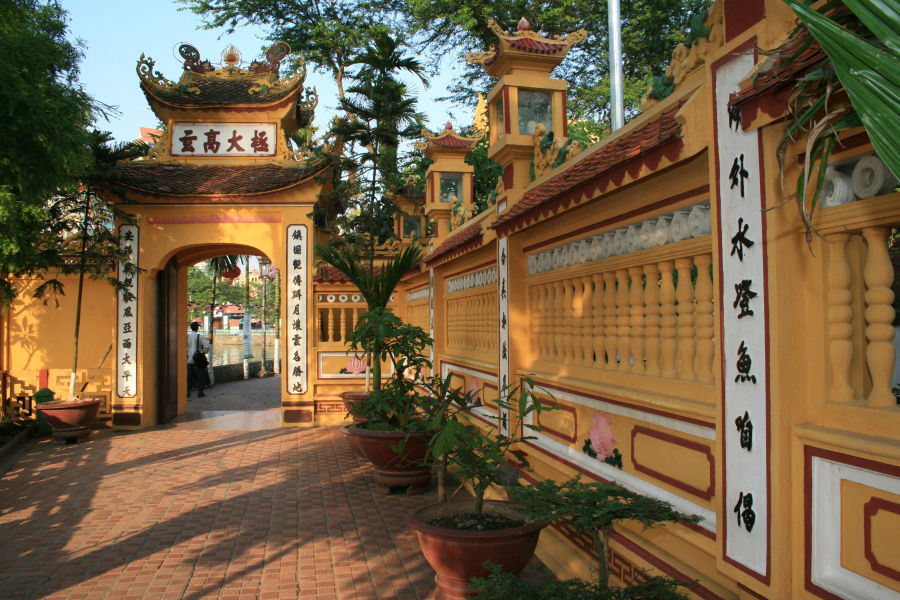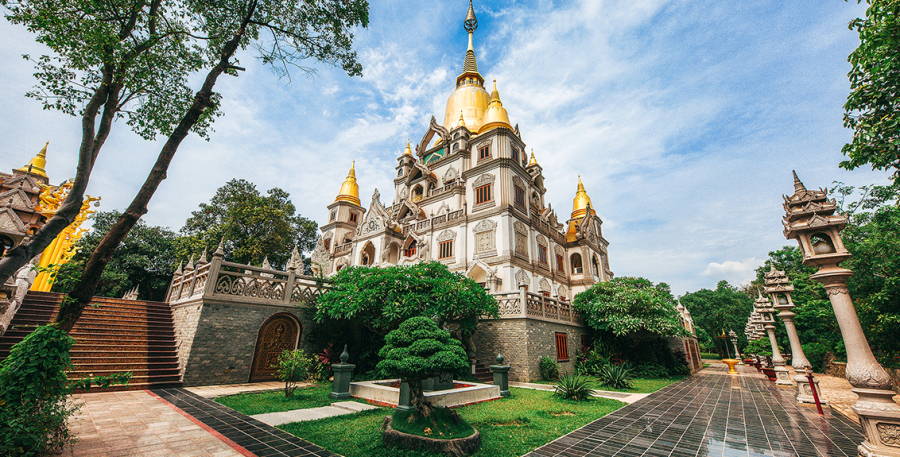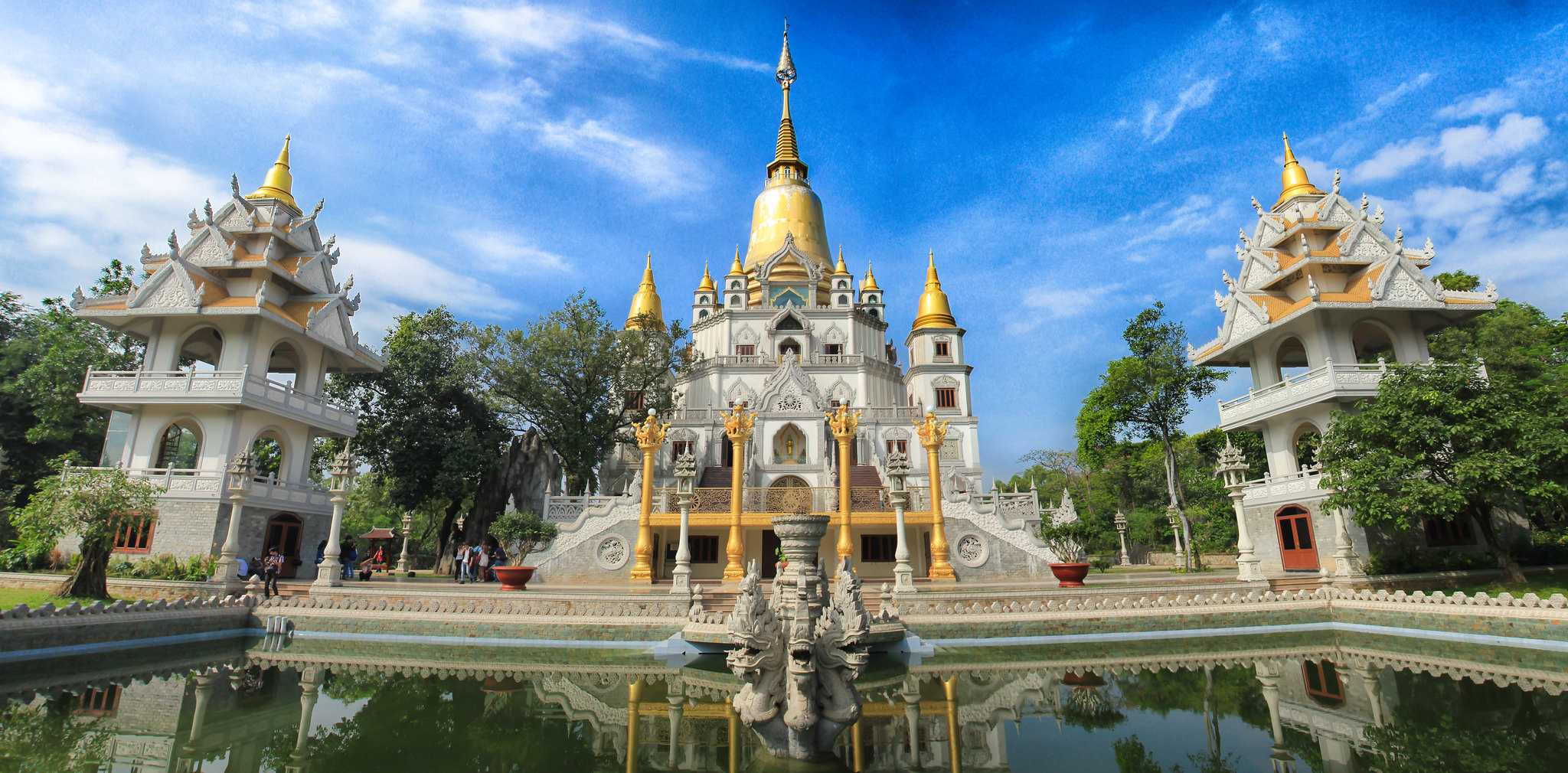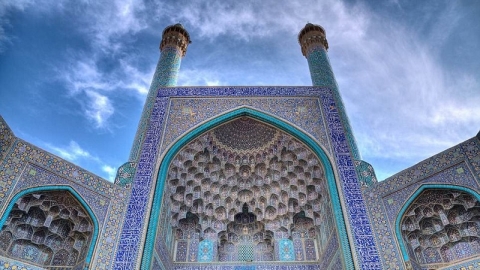In the list of 20 most beautiful temples in the world by National Geographic, many works are introduced such as: White Temple Wat Rong Khun, Chiang Rai (Thailand), Seiganto-ji Temple (Japan), Buddhist monastery Paro Taktsang (Bhutan), Angkor Wat temple complex (Cambodia), Buddhist holy land Bagan (Myanmar), Man Mo Temple (Hong Kong), Wat Xieng Thong temple of the ancient capital Luang Prabang (Laos)... and 2 temples of Vietnam: Tran Quoc Pagoda (Hanoi) and Buu Long Pagoda (HCMC).
Tran Quoc Pagoda is located on an island in the East of West Lake (Tay Ho district). The pagoda has a history of nearly 1,500 years, considered the oldest in Thang Long - Hanoi. The pagoda's architecture has a harmonious combination of solemnity, antiquity with elegant landscape in the quiet background of a vast lake. As the Buddhist center of Thang Long citadel during the Ly-Tran dynasty with historical and architectural values, Tran Quoc Pagoda is famous as a sacred Buddhist place, attracting many Buddhist followers and visitors from inside and outside Vietnam.

According to the Dictionary of Vietnamese Cultural Relics, Tran Quoc Pagoda was originally Khai Quoc Pagoda, built during the Pre-Ly Dynasty (Ly Nam De, 541-547), in Y Hoa village, near the Red River bank. During the Le Trung Hung Dynasty (1615), the pagoda was moved inside Yen Phu dike, built on the old foundation of Thuy Hoa Palace (Ly Dynasty) and Han Nguyen Palace (Tran Dynasty). In the years 1624, 1628 and 1639, the pagoda continued to be restored and expanded. The first-ranking scholar Nguyen Xuan Chinh composed the stele erected at the pagoda in 1639 about this restoration work. In the early Nguyen Dynasty, the pagoda was restored again, with bells cast and statues made. In 1821, King Minh Mang visited the pagoda and gave 20 taels of silver for renovation. In 1842, King Thieu Tri visited the pagoda and gave 1 large gold coin and 200 quan of money, and renamed the pagoda Tran Bac. But the name Tran Quoc Pagoda, which has existed since the reign of King Le Hy Tong, has been known to the people until today.

Meanwhile, Buu Long Pagoda in Ho Chi Minh City was praised by National Geographic magazine for its unique architecture. Buu Long Pagoda is located in District 9, about 20km from the center of Ho Chi Minh City, with the official name of Buu Long Zen Monastery. Established in 1942, until 2007, Buu Long Pagoda was invested in construction and restoration, becoming a typical architectural work representing the harmonious combination of Thai and Indian architecture with the architectural quintessence of the Nguyen Dynasty.

































